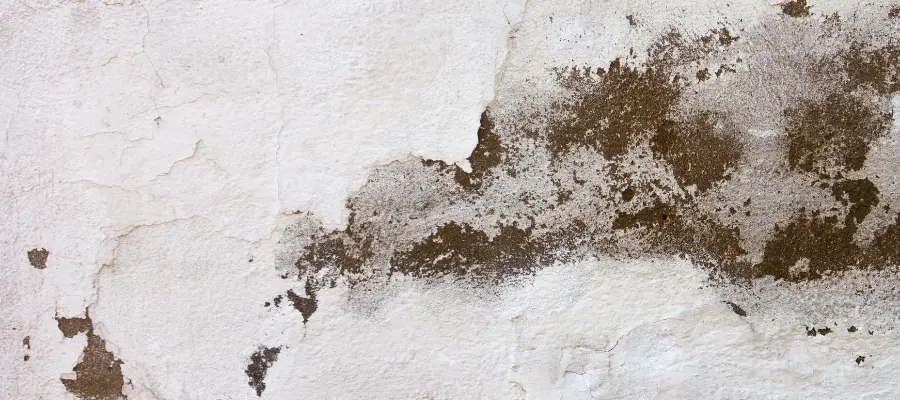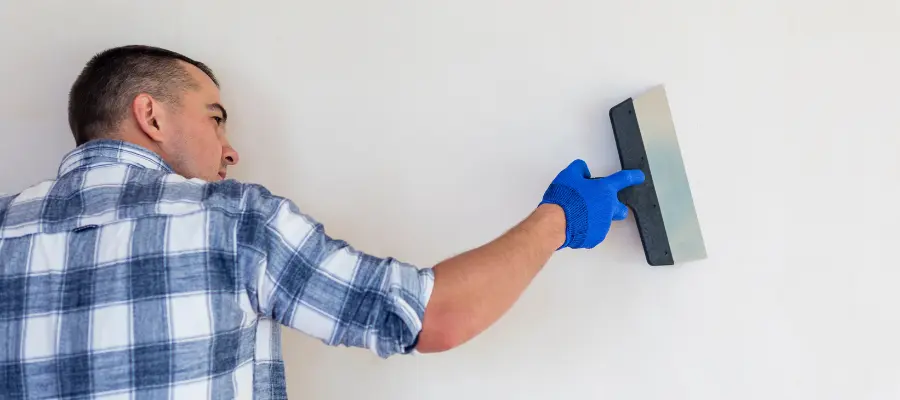After experiencing the harshness of hot summer days. Are you ready to face a cooler monsoon? It brings fresh, cool showers and amazing green surroundings.
However, it also offers damp weather and heavy downpours, which results in damage to your house. So, how are you going to save your precious house from rain? No worries. In today’s blog of Brick & Bolt, you are going to uncover monsoon care tips for walls. But, before discussing the wall protection from rain, let’s dig into the monsoon rain effects on your house walls.
So, let’s move forward.
Understanding the Impact of Monsoon on House Walls

Wall Dampness
Wall dampness, a common and maybe a serious issue, often makes an unwelcome appearance in homes during the rainy season. If not prevented, water can seep into the walls, causing significant damage.
Mould and Fungus Growth
If the dampness is not treated at the right time, mould and fungus can grow, which can be harmful to your health.
Paint Peeling
Moisture from the rain can cause leaks, which lead to bubbles, peeling paint, and cracks in walls.
Structural Damage
Continuous exposure to water will weaken the structure of your house with cracks or other serious damage.
Also Read: Understanding Building Collapse: Identifying Causes and Implementing Preventive Measures
Monsoon Care Tips for Walls

Here are some essential monsoon care tips for walls to ensure that your home remains dry, sturdy, and visually appealing throughout the rainy season.
Inspect and Repair Cracks
Before the monsoon starts, look into your house walls for any cracks or gaps, as these could be the entry points for water. Fill these cracks with the wall sellers to avoid any wall seepage. Consider consulting a professional for larger cracks to ensure they are properly repaired.
Waterproofing Solutions
Waterproofing is very important wall seepage solution that protects your house walls from moisture. Different waterproofing solutions, such as waterproof sealants, coatings, and paints, are available in the market. Apply a waterproof coating to the exterior walls to prevent water absorption. To cure properly, ensure this is performed well before the monsoon season.
Regular Maintenance of Gutters and Downspouts
As a homeowner, it’s your duty to ensure that your gutters and downspouts are clean and free of residue. Blocked gutters can cause water to overflow and run down the walls; this will generate dampness and damage. Regularly cleaning these drainage systems and making sure that they are directing water away from your home foundation and walls is a task that you can easily manage and is crucial for the well-being of your home.
Good Drainage Around the House
Good drainage is an important wall seepage solution, preventing water from accumulating around your home’s foundation. Ensure that the ground slopes away from your home so that water doesn’t collect near the walls. Additionally, you can install French drains or other drainage systems to control the water seepage in walls.
Application of Anti-Mold Paints
To protect the interior walls from moisture content, anti-mold or anti-fungal paints are a great way. These types of paints contain fungicides that control mold growth, which make the walls clean and healthy. Apply anti-mold paints in areas which are open to dampness, such as bathrooms and kitchens, for extra protection.
Install Protective Roof Overhangs
Roof overhangs can protect your house walls from direct exposure to rain. These structures help to redirect rainwater away from the walls, lessening the amount of moisture they are exposed to. This simple addition can considerably increase the life of your exterior walls.
Good Ventilation
Good ventilation is very important in reducing indoor humidity levels. Use exhaust fans in bathrooms and kitchens and ensure that your home is well-ventilated to allow moisture to escape. This helps keep the interior walls dry and free from dampness.
Seal the Doors and Windows
To keep rainwater out, add rubber gaskets to the bottom of the entrance and balcony doors. Use silicone or foam sealants to fill the gaps between walls, doors, and windows. A cheaper option is to use weather strips cut to size to seal the windows.
Additional Monsoon Care Tips for Your Walls: Preparedness Guide
Regular Paint Touch-Ups
Regularly apply better weather-resistant paint to maintain wall quality and enhance protection against the elements.
Regular Inspection
Before the monsoon starts, look into your house walls and roof regularly for cracks.
Strategic Landscaping
Garden beds and other landscaping features should be designed to direct water away from the house foundation to prevent pooling.
Timely Repairs and Upgrades
Address any minor repairs or upgrades promptly, including fixing broken tiles, sealing gaps around windows and doors, and reinforcing any weak structural points.
Conclusion
Prevention is always better than cure. Taking preventative measures to protect your house walls during or before monsoon can save lots of repair costs and extend the house’s life.
By following these monsoon care tips for walls, you can protect your house from the destructive effects of the rainy season. Remember, timely maintenance and preventive measures are important to keep your home safe, dry, and beautiful over the monsoon.
With these strategies, you will protect your home’s structural stability and create a healthier living environment for you and your family. Get ready to enjoy the monsoon season with your safe house. To know more, you can consult an experienced civil engineer or a nearby construction company like Brick & Bolt.

